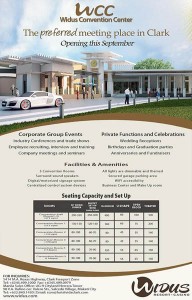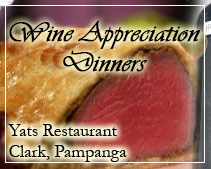Facts: Meat Science
April 20, 2011
Aging of Beef
By F.C.Parrish, Jr., Ph.D.
Introduction
Postmortem aging, sometimes called “conditioning” or “ripening,” is a natural process which improves the palatability attributes of meat, especially cuts from the rib and loin. Commercially, postmortem aging is accomplished by subjecting carcasses, primal or subprimal cuts to controlled, refrigerated (above freezing) storage conditions. Of the palatability attributes of beef steaks, tenderness is the attribute most demanded by consumers, and the improvement in tenderness is the primary reason for postmortem aging. Postmortem aging, however, also improves the palatability attribute of favor.
Primal or subprimal beef cuts from the loin and rib (middle meats) are specifically aged post-mortem, since these serve as the source desirable steaks (rib, T-bone, Porterhouse, top loin, sirloin and filet mignon steaks).
(While carcasses or cuts from any species could be aged, postmortem aging is generally limited to beef, due to the relative youth of pork, lamb and veal. Consequently, this discussion concentrates on the postmortem aging of beef.)
Postmortem Aging?
Postmortem aging is a process that occurs naturally in all muscle tissues, whether vacuum packaged or in the form of carcasses or wholesale cuts. In the conversion of muscle to meat, natural enzymes (proteases) found in muscles, breaks down specific proteins in muscle fibers (a process called proteolysis). This breaking (or fragmentation) of these protein strands, called myofibrils, by natural enzymes results in improved tenderness of the rib Tenderization occurs o1 a relatively rapid rate until 3 to 7 days postmortem, and then the rate of increased tenderness diminishes with time. Practically speaking, the increase in tenderness of rib and loin muscles during postmortem aging. Tenderization occurs at a relatively rapid rate until 3 to 7 days postmortem, and then the rate of increased tenderness diminishes with time. Practically speaking, the increase in tenderness of rib and loin cuts after 7 to 10 days is relatively small, compared with the increase during the first 7 to 10 days postmortem.
Types of Aging
Two types of postmortem aging processes are practiced commercially: “dry” and ‘wet’ aging.*
Dry aging is the traditional process of placing an entire carcass or wholesale cut (without covering or packaging) in a refrigerated room for 21 to 28 days at 32-34 degrees F. and 100-85% relative humidity, with an air velocity of 0.5 to 2.5 m/sec. All three conditions, although varying widely in commercial practice, are extremely important in the proper postmortem aging of carcasses, as well as beef ribs and loins.
A third method, accelerated aging uses a higher holding temperature with ultraviolet light used to retard microbial grown which would normally occur at higher temperatures. This method, however, has not been used commercially to a significant degree in recent years, due to the extent that vacuum packaged products are subjected to wet aging.
Too much humidity will allow excessive microbial growth, whereas too little will cause excessive shrinkage. Eighty-five percent relative humidity is a happy medium in slowing microbial growth and moisture loss.
Tenderness development can be accelerated by aging at a higher temperature; however, increased microbial growth becomes a serious problem at higher temperatures.
Air velocity is essential because it acts as a medium for moisture removal from the refrigerated area. Insufficient air velocity will allow excessive moisture to condense on the product, and as a result, off-flavors and aromas, as well as spoilage, will occur. Too high an air velocity, on the other hand, will result in excessive surface drying, with resulting weight and trim losses. The main disadvantage of dry aging is the cost associated with these weight and trim losses.
Wet aging is the aging of meat in vacuum bags (usually the middle meats) under refrigerated conditions of 32-34Β° F. Obviously, humidity and air velocity are not necessary requirements for proper wet aging. Because most beef is vacuum packaged at the site of carcass fabrication (cutting), wet aging is the predominant method of postmortem aging today.
The aging process continues when a primal or subprimal cut has been placed in a vacuum package. By the We the cut reaches the retail store, at least 7-10 days have normally elapsed the following slaughter, due to holding at packing plant for carcass chilling and fabrication, inventory storage, shipping to the retail warehouse, and subsequent shipping to the retail store level. Therefore, the time associated with the rapid tenderization (7-10 days) and that associated with product movement to the retail store are similar. However, additional aging time is generally beneficial.
Dry and wet aging both result in a similar degree of palatability of rib and loin steaks; however, there can be distinct flavor differences. meat from vacuum-aged cuts has a more bloody/serumy and metallic flavor, whereas, meat from dry-aging has a more brown-roasted beefy flavor What Factors Affect Aging?
Aging rate and time are postmortem variables affecting tenderness.
Different rates of aging means some carcasses and/or cuts tenderize very early, while others tenderize gradually. In fact, some beef does not tenderize appreciably, regardless of the aging time. Muscles that are moderately high to high in connective tissue (e.g., muscles located in the round) generally are not very tender after adequate aging because the connective tissue is not fragmented sufficiently during aging.
Widely differing amounts of time for post-mortem aging occur in commercial practice, due primarily to the time that vacuum packaged cuts are held in inventory prior to being processed into retail cuts for sale. The National Beef Tenderness Survey, conducted in 1991, indicated that beef was held (and, in effect, aged) from 3 to 90 days (with an average of 17 days) before retail sale. Aging beyond 28 days results in little benefit to enhanced palatability, and may even be detrimental in terms of increased and unwanted microbial growth and flavor changes.
Fortunately, most beef reaches some level of acceptable tenderness during postmortem aging; even so, the National Beef Tenderness Survey indicated that 15-20% of beef was undesirable in tenderness. Postmortem aging optimizes tenderness, but does not insure totally and uniformly tender beef steaks.
Specific muscles and quality grades are also considered important variables in postmortem aging. The tenderloin is the most tender muscle in the beef carcass, and interestingly requires little postmortem aging. The loin muscle, a relatively tender muscle, because of high fragmentation and small quantities of connective tissue (Collagen), has a similar pattern of postmortem aging as the eye of the round, a less tender muscle of low fragmentation and more quantities of connective tissue (collagen). Steaks from different USDA quality grades, although differing in tenderness within and between grades, have a similar pattern of aging. That is, beef cuts from USDA Choice will age very similarly to beef cuts from USDA Select.
While postmortem aging can have a profound effect on improving palatability (especially tenderness), breeding, feeding, processing and preparation all play an important role in final consumer satisfaction.
Indeed, cooking (preparation) often can be the most profound factor in determining beef steak tenderness. For example, beef loin steaks broiled to a rare degree of doneness will be more tender than steaks cooked medium or well done.
Summary
Postmortem aging of beef carcasses and cuts is a natural process that usually improves tenderness under refrigerated conditions. Natural enzymes act to break specific muscle protein strands into smaller pieces to result in improved beef steak tenderness of rib and loin cuts. Most tenderization Occurs early in the postmortem aging process, and by 10 days postmortem, most tenderization has occurred in rib and loin cuts.
Although postmortem aging has a profound optimizing effect on tenderness, it does not insure total and uniformly tender beef steaks because several other ante- and postmortem factors impact tenderness.
Source: http://www.goodcooking.com/steak/aging/aging.htm
Companies, even organizers, wedding planners and families are looking for Resorts and beaches near Manila for events and retreats. Frequently visited destinations for vacation spots this summer in Philippines are found in Angeles City, Clark, Pampanga, which is very accessible from Manila, Subic and Cebu.
Frequent travelers and visitors staying in Angeles City Pampanga Clark Philippines look for restaurants, coffee shops, bars, pubs, hotels and resorts in Clark that offer free internet connection to guests. There are some highly recommended places in Clark that offer good WIFI internet services.
Yats Restaurant and Wine Bar has its own special attraction for January 2010. Featured on the “special” menu are luxurious items that are guaranteed to make the dinners memorable. Saturdays in January are BYOB dinners which means that wine lovers can bring their own bottles to dine at Yats Restaurant without being charged corkage. BYO (Bring Your Own) is a special theme of Yats Restaurant which offers the biggest selection of fine and everyday wines anywhere in Asia.
This web site contains articles and information that will be helpful to visitors, residents and tourists traveling out of town from Manila on a short getaway to Subic, Angeles City, Pampanga and Clark Philippines. There are several web sites that contain information that might also be pertinent to what is happening in North Luzon.
For assistance with organizing and planning weddings and garden receptions, log on to http://www.PhilippinesWeddingVenue.com
For assistance with lodgings, accommodations, hotels and resorts near Manila in Subic, Pampanga, Angels City and Clark Philippines log on to http://www.HotelClarkPhilippines.com
While in Clark, one might as well add to the itinerary a visit to the famous Clark Wine Center, the largest wine shop in Philippines which offers over 2000 selections of fine vintage wine from all wine regions, vintages spanning over 50 years covering all price ranges.
http://www.ClarkWineCenter.com
If this article about Clark is useful to you, please click here to contact us to tell us what more you wish to know about this article or Clark Philippines, which can be something about Clark investment, about Clark resorts, about Clark Swimming and Leisure or simply general news about Clark.
Please send questions to Editor@ClarkPhilippines.com. Leave your name, email address, contact numbers and we will get back to you as soon as possible. Information received will not be disclosed.













